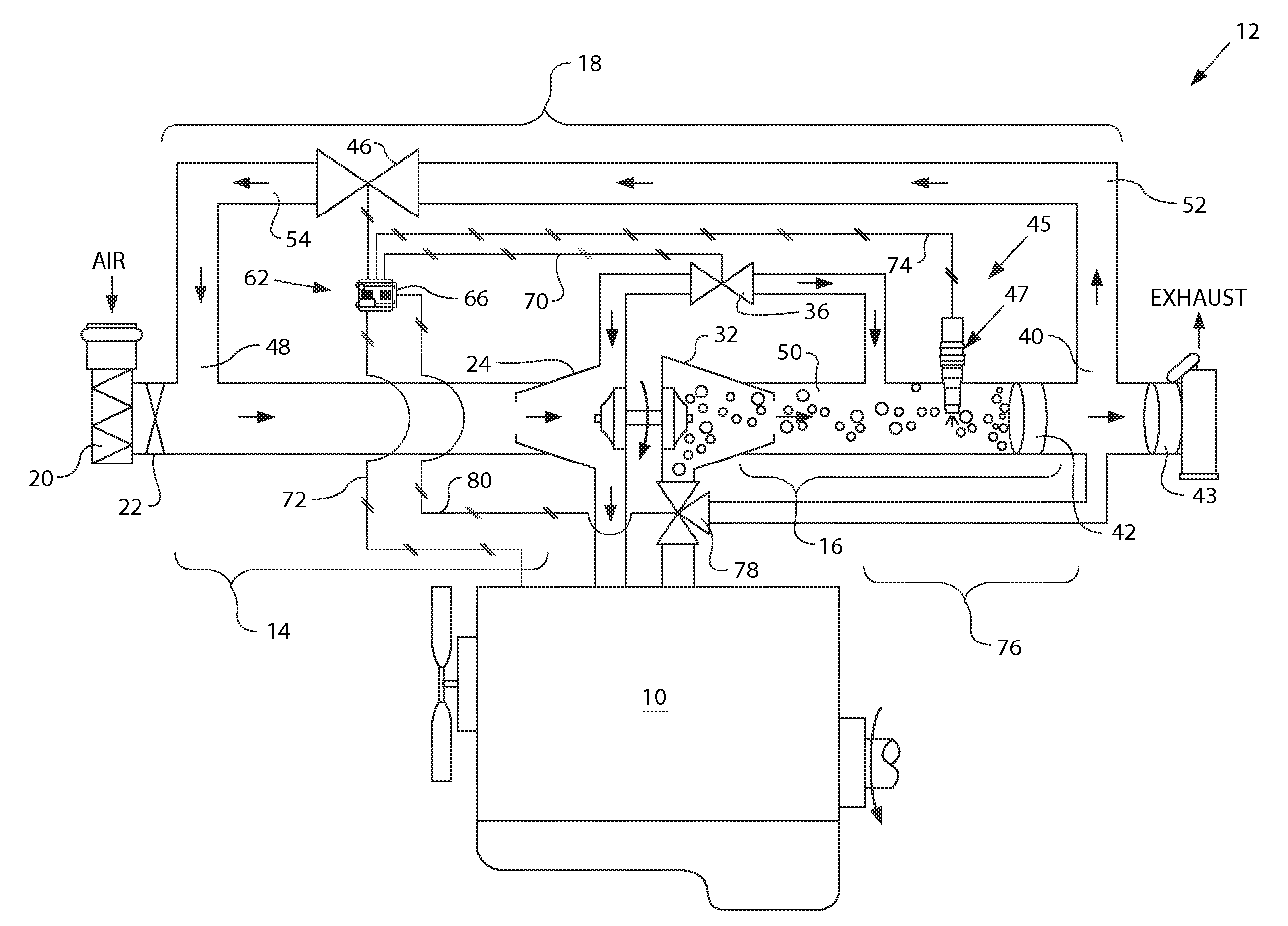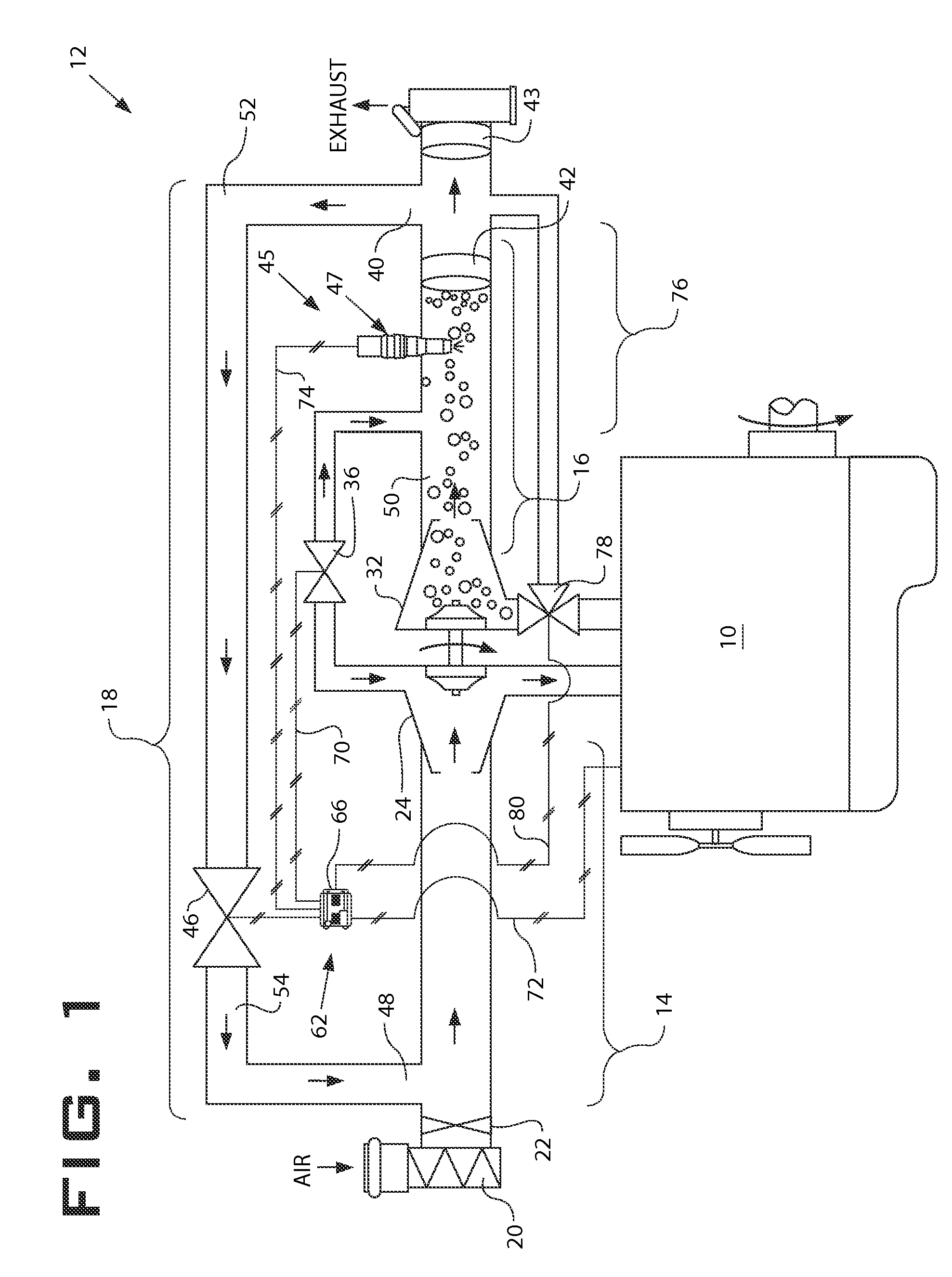Method of controlling fuel in an exhaust treatment system implementing temporary engine control
a technology of exhaust treatment system and fuel control, which is applied in the direction of electric control of exhaust treatment, machines/engines, mechanical equipment, etc., can solve the problems of reducing the functionality of the filter and subsequent engine performance, affecting both methods may affect or be affected by the amount of oxygen entering and leaving the engine, so as to facilitate the regeneration of the filter
- Summary
- Abstract
- Description
- Claims
- Application Information
AI Technical Summary
Benefits of technology
Problems solved by technology
Method used
Image
Examples
Embodiment Construction
[0013]FIG. 1 illustrates a power source 10 having an exemplary exhaust treatment system 12. Power source 10 may embody an engine such as, for example, a diesel engine, a gasoline engine, a gaseous fuel-powered engine such as a natural gas engine, or any other engine apparent to one skilled in the art. Power source 10 may alternatively embody a non-engine source of power such as a furnace. Exhaust treatment system 12 may include an air induction circuit 14, an exhaust circuit 16, and a recirculation circuit 18 coupled to power source 10 to transfer fluids into and out of power source 10.
[0014]Air induction circuit 14 may include a means for introducing charged air into a combustion chamber (not shown) of power source 10. For example, air induction circuit 14 may include an air cleaner 20 and an induction valve 22 fluidly coupled upstream of one or more compressors 24. It is contemplated that additional and / or different components may be included within air induction circuit 14 such a...
PUM
 Login to View More
Login to View More Abstract
Description
Claims
Application Information
 Login to View More
Login to View More - R&D
- Intellectual Property
- Life Sciences
- Materials
- Tech Scout
- Unparalleled Data Quality
- Higher Quality Content
- 60% Fewer Hallucinations
Browse by: Latest US Patents, China's latest patents, Technical Efficacy Thesaurus, Application Domain, Technology Topic, Popular Technical Reports.
© 2025 PatSnap. All rights reserved.Legal|Privacy policy|Modern Slavery Act Transparency Statement|Sitemap|About US| Contact US: help@patsnap.com


